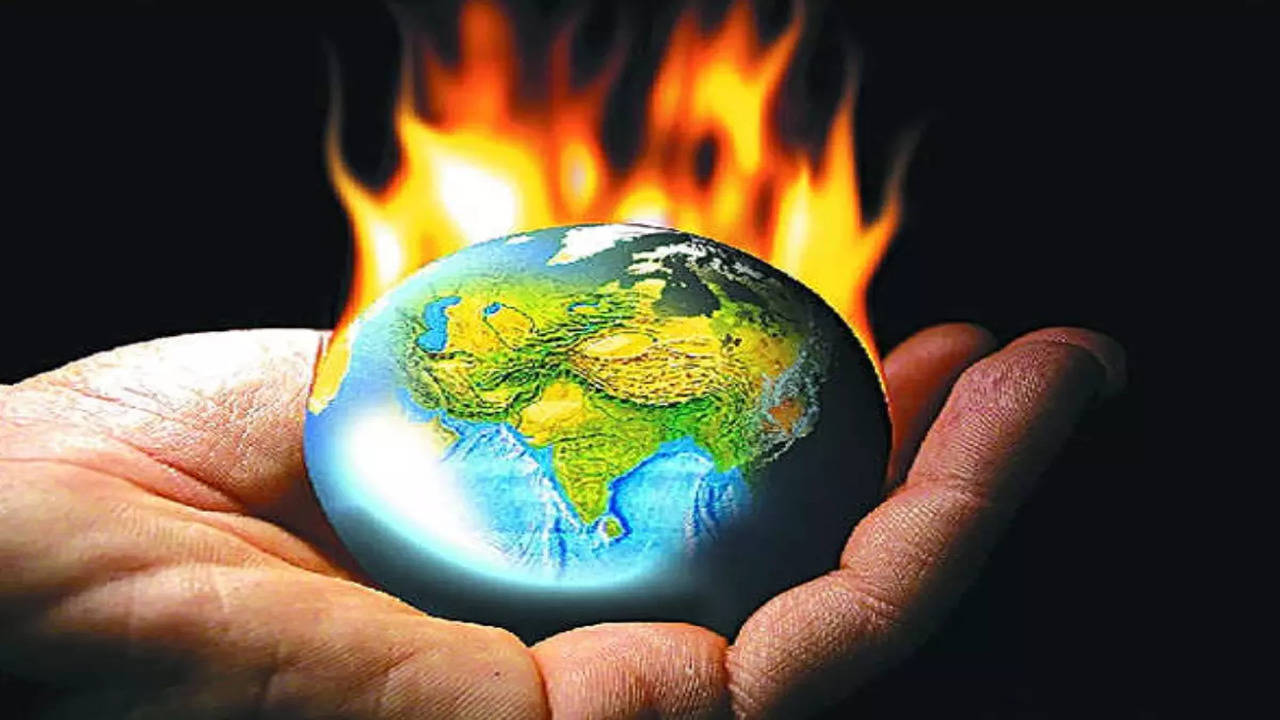Introduction
As of May 2025, Climate change in India is grappling with an unprecedented heatwave, with temperatures soaring above 46°C in several regions. This extreme weather event underscores the escalating impacts of climate change and the urgent need for sustainable living practices across the nation.
important things about Climate change in India
Climate change in India has led to a significant rise in temperatures, with the country experiencing an increase of about 0.7°C between 1901 and 2018. This warming trend is largely attributed to greenhouse gas (GHG) emissions. The consequences have been far-reaching—India was ranked as the 7th most affected country by climate change-induced extreme weather events in 2019, resulting in 2,267 deaths and economic losses amounting to $66.18 billion (PPP).
The impacts of climate change in India are particularly severe when it comes to hydrological and meteorological disasters such as floods, droughts, and cyclones. Around 17 out of every 20 people in the country are vulnerable to these extreme events. Among the most affected are children. According to UNICEF’s 2021 report, The Climate Crisis Is a Child Rights Crisis: Introducing the Children’s Climate Risk Index (CCRI), India ranks 26th out of 163 countries. This suggests that climate change in India poses a serious threat to the health, education, and protection of children.

Air pollution is another major concern linked to climate change in India. The UNICEF report notes that 90% of children globally breathe toxic air daily, which is associated with major child killers such as pneumonia. The State of Global Air 2020 report highlights that countries in Asia, including India, have the highest age-standardized death rates from exposure to PM2.5 particles.
Climate change in India has contributed to this air quality crisis. According to the 2020 IQAir report, 21 of the world’s 30 most polluted cities are located in India, putting millions at risk of respiratory and other health problems. A Lancet study from 2018 revealed that air pollution caused 1.24 million deaths in India in 2017, accounting for 12.5% of all deaths that year.
As climate change in India continues to intensify, its effects are being felt across every sector—from public health to economic stability. The need for urgent climate action is underscored by the growing evidence of damage. If not addressed, climate change in India will continue to jeopardize the future of its people, especially its children, who are among the most vulnerable.
Ultimately, tackling climate change in India requires coordinated efforts at national and global levels to reduce emissions, improve air quality, and build resilience against extreme weather. The future depends on how effectively climate change in India is addressed today.
The Intensifying Heatwave Crisis
Recent studies reveal that nearly 57% of Indian districts, home to 76% of the country’s population, are at high to very high risk from extreme heat. The India Meteorological Department warns that the April-June summer season will be hotter than normal over most parts of India, with above-normal day and night temperatures.
Climate Change: The Underlying Cause
Scientific analyses attribute the increasing frequency and intensity of heatwaves in India to human-induced climate change. The April 2025 India-Pakistan heatwave, for instance, was significantly intensified by anthropogenic factors. Rising global temperatures have led to more severe and prolonged heat events, posing serious challenges to public health and infrastructure.

Impact on Agriculture and Food Security
The agricultural sector, a cornerstone of India’s economy, is severely affected by the heatwave. Crops like wheat, mangoes, and lychees have suffered extensive damage, threatening food security and farmers’ livelihoods. An increase of 1–2°C in temperature is projected to have a significant negative impact on the yield of major food crops in low-altitude countries like India.
Health Implications
Beyond physical health, the heatwave has profound mental health implications. Exposure to extreme heat can lead to increased cases of depression, anxiety, and other mental health disorders. The combination of high temperatures and humidity exacerbates these effects, highlighting the need for comprehensive health strategies.
Urban Challenges and Infrastructure Strain
Urban areas face unique challenges during heatwaves. The “urban heat island” effect, where cities are significantly warmer than surrounding rural areas, intensifies the impact. Increased demand for electricity to power cooling systems strains the grid, leading to blackouts and further discomfort.
Government Initiatives and Sustainable Practices
Recognizing the urgency, both central and state governments have launched initiatives to promote sustainable living. For instance, the Delhi government has unveiled its Heat Action Plan for 2025, which includes setting up heatwave wards in hospitals, placing water coolers across the city, and building eco-friendly bus stop shelters with green roofs. Additionally, the Pune Municipal Corporation has initiated the Green Guardians program, encouraging citizens to plant and maintain native tree species under the Green Pune, Sustainable Pune campaign.

Community Engagement and Awareness
Public participation is crucial in combating climate change. Festivals like Van Mahotsav encourage tree planting and environmental awareness. Educational campaigns and community-led initiatives play a pivotal role in fostering a culture of sustainability.

Technological Innovations in Agriculture
Advancements in agricultural technology offer hope. The development of genome-edited rice varieties, such as ‘DRR Dhan 100 (Kamala)’ and ‘Pusa DST Rice 1’, engineered to thrive with less water, is a significant step towards sustainable farming. These innovations can help farmers adapt to changing climatic conditions and ensure food security.
Conclusion
The 2025 heatwave serves as a wake-up call for India. Addressing climate change requires a multifaceted approach, combining government policies, technological innovation, and community engagement. By embracing sustainable living practices, India can build resilience against future climate challenges and pave the way for a healthier, more sustainable future.
must visit- atozfunda.com